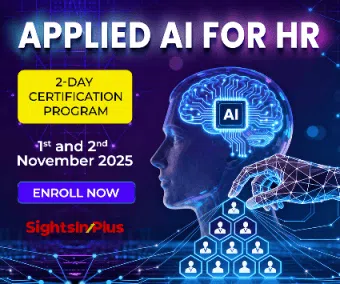Rendezvous with Rajesh Tripathi on Meaningful Rewards in Today’s Agile and Hybrid Workplaces
Rajesh Tripathi, CEO of Prajjo Kenbox Technologies Pvt Ltd., is a visionary leader with over 30 years of experience across FMCG, IT, telecom, and engineering industries. Known for transforming organizational cultures, Rajesh has consistently driven innovative HR solutions throughout his career.
His deep-rooted expertise in people management and change leadership has positioned him as a pioneer in aligning business strategy with human capital development. Under his guidance, Prajjo Kenbox Technologies has launched a revolutionary HR tech platform that has garnered global recognition.
Rajesh continues to shape the future of work by blending technology with empathy, making Prajjo a benchmark for excellence in the HR tech landscape.
Q- How has your HR background influenced your approach to rewards and recognition as a CEO?
Employee motivation is paramount. With a background in HR, I’ve had the opportunity to interact with employees across various organizations. One consistent truth stands out: people seek motivation both internally and externally. As I transitioned into the role of CEO at Kenbox, I made it a priority to embed employee engagement and motivation as core elements of our organizational culture, continuing a practice I valued long before stepping into this leadership role.
My HR journey has given me a people-first lens that allows me to understand workforce sentiments, align recognition with career growth, and foster a sense of belonging. This perspective ensures our R&R strategies are rooted in empathy, data, and business alignment, making them more impactful and sustainable across different organizational levels and geographies.
This background has also helped me maintain a balance between organizational objectives and employee well-being. The ability to listen, adapt, and customize recognition programs based on actual employee needs has been a valuable strength, ensuring that motivation isn’t treated as a one-time initiative but as an ongoing commitment embedded in leadership practice and organizational values.
Q- In your view, how can recognition fuel business transformation and growth?
All studies revealed that the higher the motivation, the higher the business outcome. In fact, companies with highly motivated employees see up to a 21% increase in profitability, according to a Gallup study. Additionally, motivated teams show 41% lower absenteeism and 17% higher productivity.
Recognition helps create a culture of appreciation where employees are more likely to go the extra mile. When employees feel acknowledged, their sense of ownership and engagement increases, which directly contributes to business success. It cultivates an environment where employees feel psychologically safe and emotionally connected, boosting discretionary effort.
When embedded into business strategy, recognition encourages alignment with goals, enhances loyalty, and drives continuous improvement, thus acting as a powerful enabler of transformation and long-term growth. In my experience, embedding recognition into the business creates a ripple effect.
It improves inter-team collaboration, reinforces desirable behaviors, and ultimately creates a culture of excellence and accountability. Over time, these cumulative efforts can pivot an organization from stagnation to innovation, supporting not just retention and productivity but also holistic and sustainable growth.
Q- What are the key challenges in designing a recognition framework that appeals across diverse employee groups?
In my experience, the key challenge in conceiving and designing an appropriate platform for employees lies in addressing the diversity and generational differences within the workforce. Factors such as upbringing, cultural environment, and geopolitical context must be carefully considered to ensure the platform is inclusive, relevant, and truly engaging for all employees. One-size-fits-all approaches often fall short in today’s global and multigenerational workplaces.
It is essential to incorporate different types of recognition, such as monetary, social, and developmental, so individuals can feel seen in ways that resonate with their unique values. Feedback mechanisms, adaptability, and cultural intelligence are critical when designing a framework that meets a broad spectrum of needs without losing its core effectiveness or authenticity.
Furthermore, technology access, remote inclusion, and cultural sensitivity must be constantly evaluated. A successful framework can evolve with changing workforce expectations while staying grounded in its core purpose: making employees feel genuinely appreciated. The challenge is ongoing and dynamic, requiring regular review, feedback integration, and cultural adaptability to remain relevant.
Q- How do you ensure that rewards remain meaningful in today’s agile, hybrid work culture?
Technology has influenced every aspect of human life, including the workplace. For employees, this means evolving work environments, shifting expectations around boundaries, and a growing need to understand their personal lives without infringing on privacy.
These factors are essential when designing a rewards and recognition (R&R) program that feels meaningful and relevant. In a hybrid world that we currently live in, personalization and timing play an even more vital role. Instant acknowledgment, peer recognition tools, and meaningful gestures tailored to an individual’s preferences ensure the reward feels authentic. Additionally, consistent visibility, integration with communication tools, and data-driven personalization help rewards stay timely and relatable.
Building moments of surprise and celebration, even virtually, helps make recognition emotionally impactful, which is essential for a distributed, agile workforce. Staying connected through digital tools, ensuring equitable access to recognition opportunities, and nurturing a human-centered approach helps make R&R resonate. By frequently adapting formats and platforms to evolving employee expectations, organizations can ensure rewards are not just timely but also deeply valued.
Q- How do you measure the effectiveness of your rewards and recognition programs at the leadership level?
Indicators such as low attrition, increased productivity, and genuine employee satisfaction, often reflected in something as simple as a smile, can serve as key metrics to evaluate the effectiveness of an R&R program at the leadership level. While data is important, qualitative feedback also holds great weight.
Leadership pulse surveys, team engagement scores, and feedback loops from line managers help validate the success of these programs. Additionally, when recognition becomes a part of everyday conversations and not a formal event alone, it’s a sign of cultural adoption. We also observe correlations between recognition frequency and internal promotions or project performance.
Ultimately, a holistic approach, mixing analytics with people insights, provides a clear picture of R&R’s true impact on organizational culture. Dashboards can showcase patterns and gaps, but storytelling and open forums often reveal the deeper, emotional impact. At the leadership level, it’s important to go beyond metrics and ensure that recognition contributes to psychological safety, innovation, and long-term retention.
Q- What advice would you give to CHROs looking to link recognition more closely with business strategy?
Every business strategy brings with it unique processes and cultural nuances that influence both the professional and personal lives of employees. As a result, CHROs must begin by understanding the foundational needs and inherent constraints of their organization before designing a tailored R&R framework. For example, the approach to rewards and recognition in service-based industries often requires replicable, standardized methods, but still must account for contextual relevance.
My advice is to treat recognition as a strategic enabler, not just an HR function. It should mirror company values and support measurable business outcomes. CHROs must champion a culture where recognizing contributions becomes an everyday leadership habit, one that reinforces the behaviors and outcomes that drive sustained competitive advantage.
Recognition should not be reactive; it must be designed as an intentional act of strategic alignment. By empowering managers, creating recognition touchpoints, and continuously measuring impact, CHROs can elevate R&R from a feel-good initiative to a high-impact business lever.
Thank you, Rajesh!
Note: We are also on WhatsApp, LinkedIn, Google News, and YouTube, to get the latest news updates. Subscribe to our Channels. WhatsApp– Click Here, Google News– Click Here, YouTube – Click Here, and LinkedIn– Click Here.



